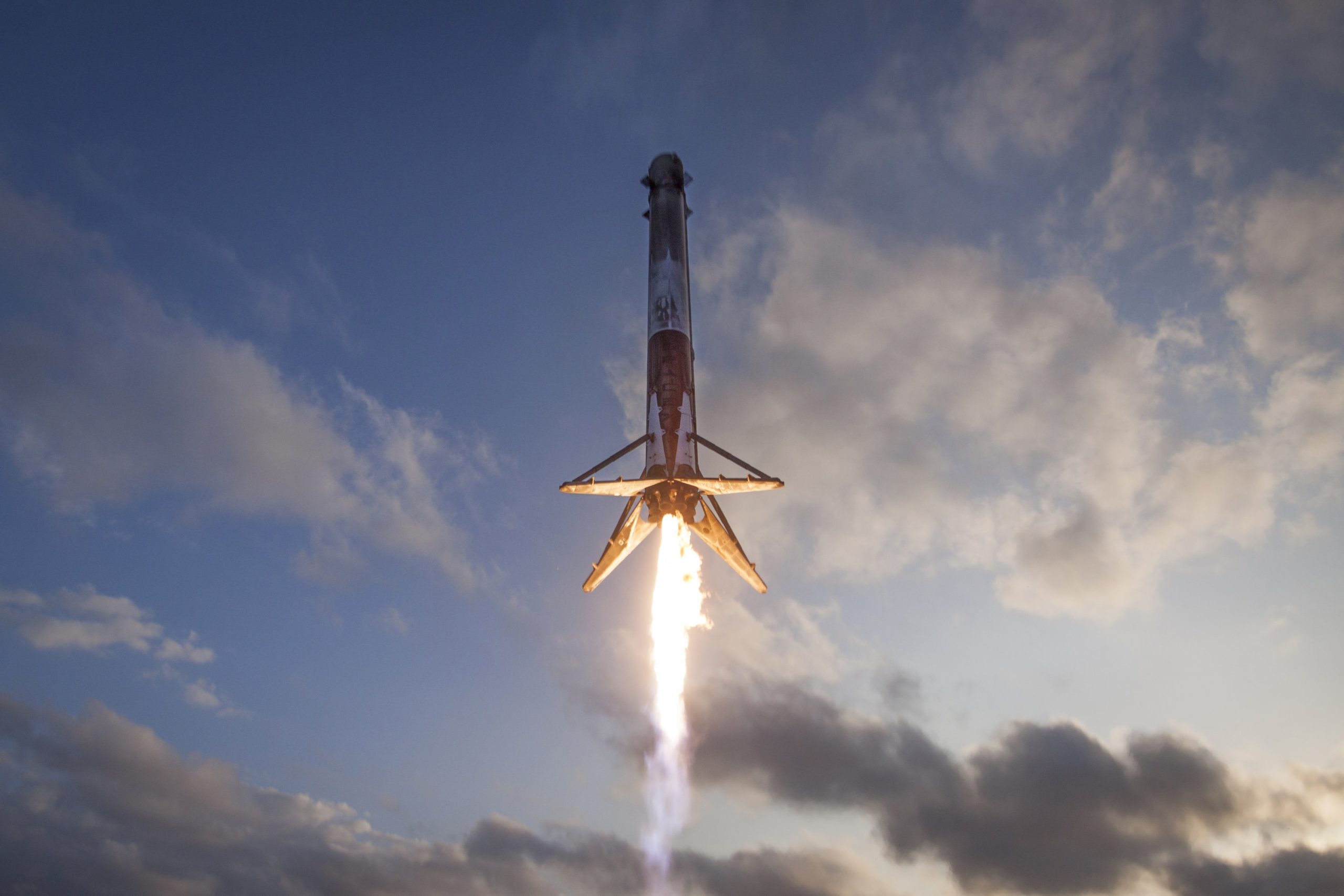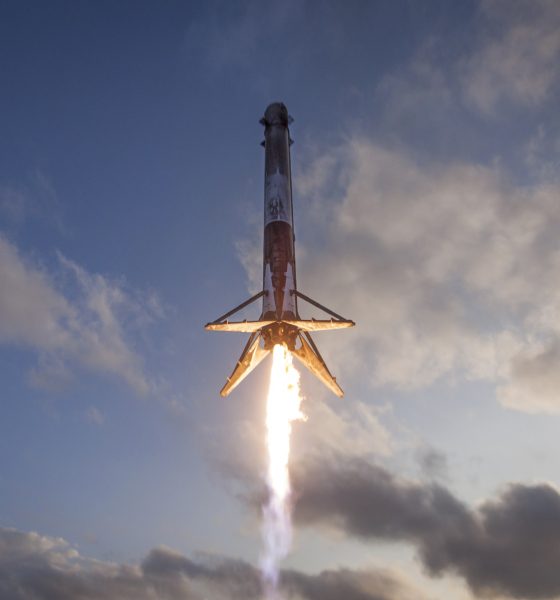

News
SpaceX set for third Falcon 9 reuse in October, swaps a 2018 launch with Arianespace
Satellite operator and manufacturer SES has decided to juggle launches between SpaceX and Arianespace, a French launch provider.
Made for a number of reasons related to the economics of satellite operation and launch date uncertainty, SES has chosen to have SpaceX launch the heavier SES-12 satellite in Q1 of 2018, and Arianespace will now launch SES-14 “early Q1” of 2018. SES has experienced difficulties with some of its operational satellites that have led to decreased revenue, and the goal with the launch swap is to guarantee that SES will have an operational, revenue-generating satellite in place a few weeks sooner than they might have had if relying on SpaceX’s uncertain launch date.
The relationship between launch providers and launch customers has long been a complex legal process, but the upside with this flip is that thorough contracts anticipated this possibility and allowed SES flexibility in the eventuality that they need to expedite launches or change launch vehicles. It is intriguing that SES would adopt the necessary risks associated with switching launch vehicles months before launch to maybe gain an extra few weeks of additional revenue, but SES has admittedly had a difficult year for satellite reliability.
SES-12, the satellite SpaceX is now contracted to launch, weighs about 1000 kg more than SES-14 and will be pushing the limits of Falcon 9 recovery at ~5300 kg. Both satellites are completely electric, meaning they utilize efficient ion propulsion, which lowers the amount of fuel needed and allows satellite manufacturers to include far more revenue-generating payload on a satellite. The downside of ion propulsion is that it produces far less thrust than the average chemical rocket, meaning that all-electric satellites take months to reach their operational orbits, compared to a handful of weeks with chemical propulsion.

The SES-12 satellite SpaceX is expected to launch early next year. (SES)
While admittedly heavy, SpaceX will almost certainly attempt booster recovery following the launch of SES-12, unless SES requests that the launch be expendable. An expendable launch could potentially benefit SES by expediting the satellite’s trip to geostationary orbit, thus providing the company more revenue. However, this would have likely been acknowledged in SES’ press release. As such, we can look forward to a toasty booster recovery, likely sporting titanium grid fins to cope with the intense heating the core will experience.
Nearer term, SES-11 is pressing ahead for an early-October launch this year, and will mark SpaceX’s third commercial re-flight of a recovered Falcon 9 first stage. SES has long been one of the most avid and committed supporters of SpaceX, and the two companies built a relationship and signed contracts by 2011, before SpaceX’s Falcon 9 had even conducted its inaugural flight. SES has been and likely will continue to be a crucial example of the success of reuse.
Meanwhile, SpaceX is looking to conduct its next launch on September 7th, and static fire attempt is expected Thursday, August 31 at their LC-39A launch pad in Florida. This mission will launch the USAF’s secretive X-37B spaceplane into a low Earth orbit, and while there will likely be no views of the payload on the livestream, that likely means that SpaceX will focus heavily on the booster recovery. NROL-76 was the last launch that featured this focus, and it produced some incredible views of the first stage as it returned to Earth.

News
Tesla aims to combat common Full Self-Driving problem with new patent
Tesla writes in the patent that its autonomous and semi-autonomous vehicles are heavily reliant on camera systems to navigate and interact with their environment.

Tesla is aiming to combat a common Full Self-Driving problem with a new patent.
One issue with Tesla’s vision-based approach is that sunlight glare can become a troublesome element of everyday travel. Full Self-Driving is certainly an amazing technology, but there are still things Tesla is aiming to figure out with its development.
Unfortunately, it is extremely difficult to get around this issue, and even humans need ways to combat it when they’re driving, as we commonly use sunglasses or sun visors to give us better visibility.
Cameras obviously do not have these ways to fight sunglare, but a new patent Tesla recently had published aims to fight this through a “glare shield.”
Tesla writes in the patent that its autonomous and semi-autonomous vehicles are heavily reliant on camera systems to navigate and interact with their environment.

The ability to see surroundings is crucial for accurate performance, and glare is one element of interference that has yet to be confronted.
Tesla described the patent, which will utilize “a textured surface composed of an array of micro-cones, or cone-shaped formations, which serve to scatter incident light in various directions, thereby reducing glare and improving camera vision.”

The patent was first spotted by Not a Tesla App.
The design of the micro-cones is the first element of the puzzle to fight the excess glare. The patent says they are “optimized in size, angle, and orientation to minimize Total Hemispherical Reflectance (THR) and reflection penalty, enhancing the camera’s ability to accurately interpret visual data.”
Additionally, there is an electromechanical system for dynamic orientation adjustment, which will allow the micro-cones to move based on the angle of external light sources.
This is not the only thing Tesla is mulling to resolve issues with sunlight glare, as it has also worked on two other ways to combat the problem. One thing the company has discussed is a direct photon count.
CEO Elon Musk said during the Q2 Earnings Call:
“We use an approach which is direct photon count. When you see a processed image, so the image that goes from the sort of photon counter — the silicon photon counter — that then goes through a digital signal processor or image signal processor, that’s normally what happens. And then the image that you see looks all washed out, because if you point the camera at the sun, the post-processing of the photon counting washes things out.”
Future Hardware iterations, like Hardware 5 and Hardware 6, could also integrate better solutions for the sunglare issue, such as neutral density filters or heated lenses, aiming to solve glare more effectively.
Elon Musk
Delaware Supreme Court reinstates Elon Musk’s 2018 Tesla CEO pay package
The unanimous decision criticized the prior total rescission as “improper and inequitable,” arguing that it left Musk uncompensated for six years of transformative leadership at Tesla.

The Delaware Supreme Court has overturned a lower court ruling, reinstating Elon Musk’s 2018 compensation package originally valued at $56 billion but now worth approximately $139 billion due to Tesla’s soaring stock price.
The unanimous decision criticized the prior total rescission as “improper and inequitable,” arguing that it left Musk uncompensated for six years of transformative leadership at Tesla. Musk quickly celebrated the outcome on X, stating that he felt “vindicated.” He also shared his gratitude to TSLA shareholders.
Delaware Supreme Court makes a decision
In a 49-page ruling Friday, the Delaware Supreme Court reversed Chancellor Kathaleen McCormick’s 2024 decision that voided the 2018 package over alleged board conflicts and inadequate shareholder disclosures. The high court acknowledged varying views on liability but agreed rescission was excessive, stating it “leaves Musk uncompensated for his time and efforts over a period of six years.”
The 2018 plan granted Musk options on about 304 million shares upon hitting aggressive milestones, all of which were achieved ahead of time. Shareholders overwhelmingly approved it initially in 2018 and ratified it once again in 2024 after the Delaware lower court struck it down. The case against Musk’s 2018 pay package was filed by plaintiff Richard Tornetta, who held just nine shares when the compensation plan was approved.
A hard-fought victory
As noted in a Reuters report, Tesla’s win avoids a potential $26 billion earnings hit from replacing the award at current prices. Tesla, now Texas-incorporated, had hedged with interim plans, including a November 2025 shareholder-approved package potentially worth $878 billion tied to Robotaxi and Optimus goals and other extremely aggressive operational milestones.
The saga surrounding Elon Musk’s 2018 pay package ultimately damaged Delaware’s corporate appeal, prompting a number of high-profile firms, such as Dropbox, Roblox, Trade Desk, and Coinbase, to follow Tesla’s exodus out of the state. What added more fuel to the issue was the fact that Tornetta’s legal team, following the lower court’s 2024 decision, demanded a fee request of more than $5.1 billion worth of TSLA stock, which was equal to an hourly rate of over $200,000.
Delaware Supreme Court Elon Musk 2018 Pay Package by Simon Alvarez
News
Tesla Cybercab tests are going on overdrive with production-ready units
Tesla is ramping its real-world tests of the Cybercab, with multiple sightings of the vehicle being reported across social media this week.

Tesla is ramping its real-world tests of the Cybercab, with multiple sightings of the autonomous two-seater being reported across social media this week. Based on videos of the vehicle that have been shared online, it appears that Cybercab tests are underway across multiple states.
Recent Cybercab sightings
Reports of Cybercab tests have ramped this week, with a vehicle that looked like a production-ready prototype being spotted at Apple’s Visitor Center in California. The vehicle in this sighting was interesting as it was equipped with a steering wheel. The vehicle also featured some changes to the design of its brake lights.
The Cybercab was also filmed testing at the Fremont factory’s test track, which also seemed to involve a vehicle that looked production-ready. This also seemed to be the case for a Cybercab that was spotted in Austin, Texas, which happened to be undergoing real-world tests. Overall, these sightings suggest that Cybercab testing is fully underway, and the vehicle is really moving towards production.
Production design all but finalized?
Recently, a near-production-ready Cybercab was showcased at Tesla’s Santana Row showroom in San Jose. The vehicle was equipped with frameless windows, dual windshield wipers, powered butterfly door struts, an extended front splitter, an updated lightbar, new wheel covers, and a license plate bracket. Interior updates include redesigned dash/door panels, refined seats with center cupholders, updated carpet, and what appeared to be improved legroom.
There seems to be a pretty good chance that the Cybercab’s design has been all but finalized, at least considering Elon Musk’s comments at the 2025 Annual Shareholder Meeting. During the event, Musk confirmed that the vehicle will enter production around April 2026, and its production targets will be quite ambitious.








